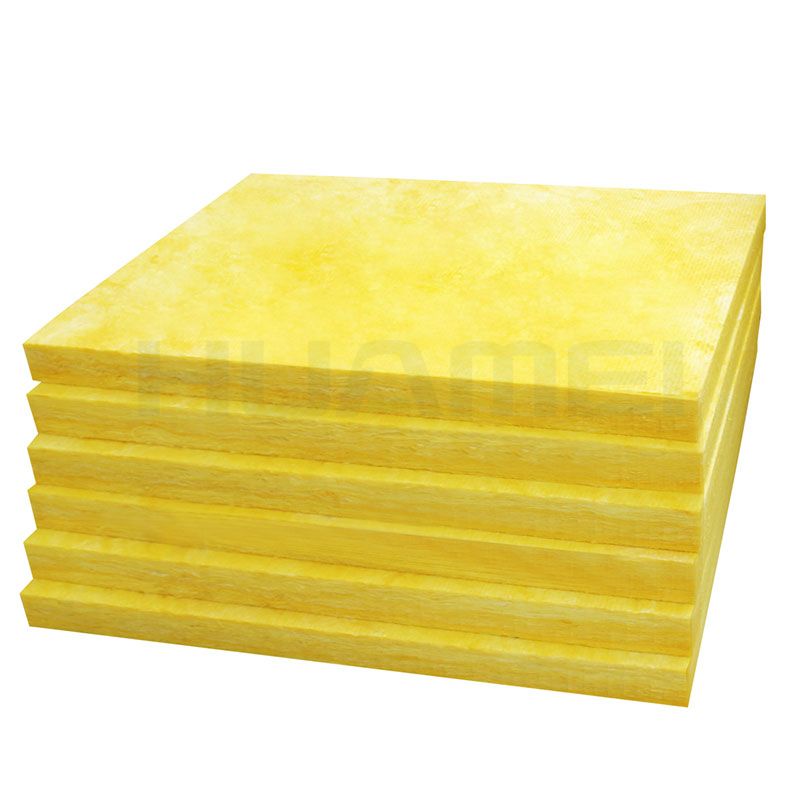In the world of thermal insulation, one name stands out for its exceptional versatility, performance, and countless applications: glass wool. Glass wool is an exceptional product combining innovation and sustainability and has become an indispensable asset in the fields of construction, energy saving, and thermal efficiency. In essence, glass wool is an ingenious product, carefully crafted from molten glass and spun into fine fibers. These fibers interlock to form a lightweight, porous material with excellent insulating properties. The beauty of glass wool is its ability to trap air within its intricate matrix, creating a thermal barrier that prevents heat transfer. This property, combined with its inherent fire resistance and sound absorption properties, makes glass wool the insulation of choice for a range of applications.

Benefits Beyond Boundaries: Advantages of Glass Wool
Excellent thermal insulation properties: Glass wool has an excellent ability to reduce heat transfer, making it the first choice for maintaining a comfortable indoor temperature while minimizing energy consumption. Its high R-value measures how well it insulates and contributes to the energy efficiency of residential and commercial buildings.
Fire resistance: The safety of glass wool is the top priority. The non-combustibility of glass wool ensures that it will not contribute to the spread of flames, thus playing an important role in the critical moment of fire.
Acoustic Comfort: In addition to its thermal properties, glass wool is an excellent sound-absorbing material. Its porous structure dampens noise, making it a valuable component in spaces where acoustic comfort is important, such as recording studios, auditoriums, and offices.
Moisture Management: The moisture-repelling properties of glass wool prevent water from accumulating within the insulation, protecting the integrity of the material and its surrounding structure.
Customization: Glass wool is available in a variety of densities, thicknesses, and sizes for excellent adaptability. This versatility enables custom solutions to meet specific insulation requirements, ensuring optimum performance and efficiency.
Application: transforming spaces with glass wool
Home Insulation: From the attic to the walls, glass wool is the backbone of home insulation, ensuring year-round comfort in energy-efficient homes.
Commercial Structures: Glass wool occupies a central place in commercial buildings, enhancing the thermal and acoustic comfort of office spaces, retail spaces, and educational institutions.
Industrial Applications: The heat resistance of glass wool makes it an ally in industrial settings, where it plays a role in insulating equipment, piping, and HVAC systems.
Transportation: Glass wool is widely used in the field of transportation due to its lightweight and thermal insulation properties, providing heat insulation for vehicles and ships, and realizing the best use of energy.
In conclusion, a journey in the field of glass wool reveals a material that goes beyond traditional insulation. Its ability to strike a harmonious balance between energy efficiency, safety, acoustic comfort, and customization is a testament to human innovation. As building practices evolve and sustainability is prioritized, glass wool will continue to shape comfortable and efficient landscapes in different areas.

Benefits Beyond Boundaries: Advantages of Glass Wool
Excellent thermal insulation properties: Glass wool has an excellent ability to reduce heat transfer, making it the first choice for maintaining a comfortable indoor temperature while minimizing energy consumption. Its high R-value measures how well it insulates and contributes to the energy efficiency of residential and commercial buildings.
Fire resistance: The safety of glass wool is the top priority. The non-combustibility of glass wool ensures that it will not contribute to the spread of flames, thus playing an important role in the critical moment of fire.
Acoustic Comfort: In addition to its thermal properties, glass wool is an excellent sound-absorbing material. Its porous structure dampens noise, making it a valuable component in spaces where acoustic comfort is important, such as recording studios, auditoriums, and offices.
Moisture Management: The moisture-repelling properties of glass wool prevent water from accumulating within the insulation, protecting the integrity of the material and its surrounding structure.
Customization: Glass wool is available in a variety of densities, thicknesses, and sizes for excellent adaptability. This versatility enables custom solutions to meet specific insulation requirements, ensuring optimum performance and efficiency.
Application: transforming spaces with glass wool
Home Insulation: From the attic to the walls, glass wool is the backbone of home insulation, ensuring year-round comfort in energy-efficient homes.
Commercial Structures: Glass wool occupies a central place in commercial buildings, enhancing the thermal and acoustic comfort of office spaces, retail spaces, and educational institutions.
Industrial Applications: The heat resistance of glass wool makes it an ally in industrial settings, where it plays a role in insulating equipment, piping, and HVAC systems.
Transportation: Glass wool is widely used in the field of transportation due to its lightweight and thermal insulation properties, providing heat insulation for vehicles and ships, and realizing the best use of energy.
In conclusion, a journey in the field of glass wool reveals a material that goes beyond traditional insulation. Its ability to strike a harmonious balance between energy efficiency, safety, acoustic comfort, and customization is a testament to human innovation. As building practices evolve and sustainability is prioritized, glass wool will continue to shape comfortable and efficient landscapes in different areas.
评论
发表评论